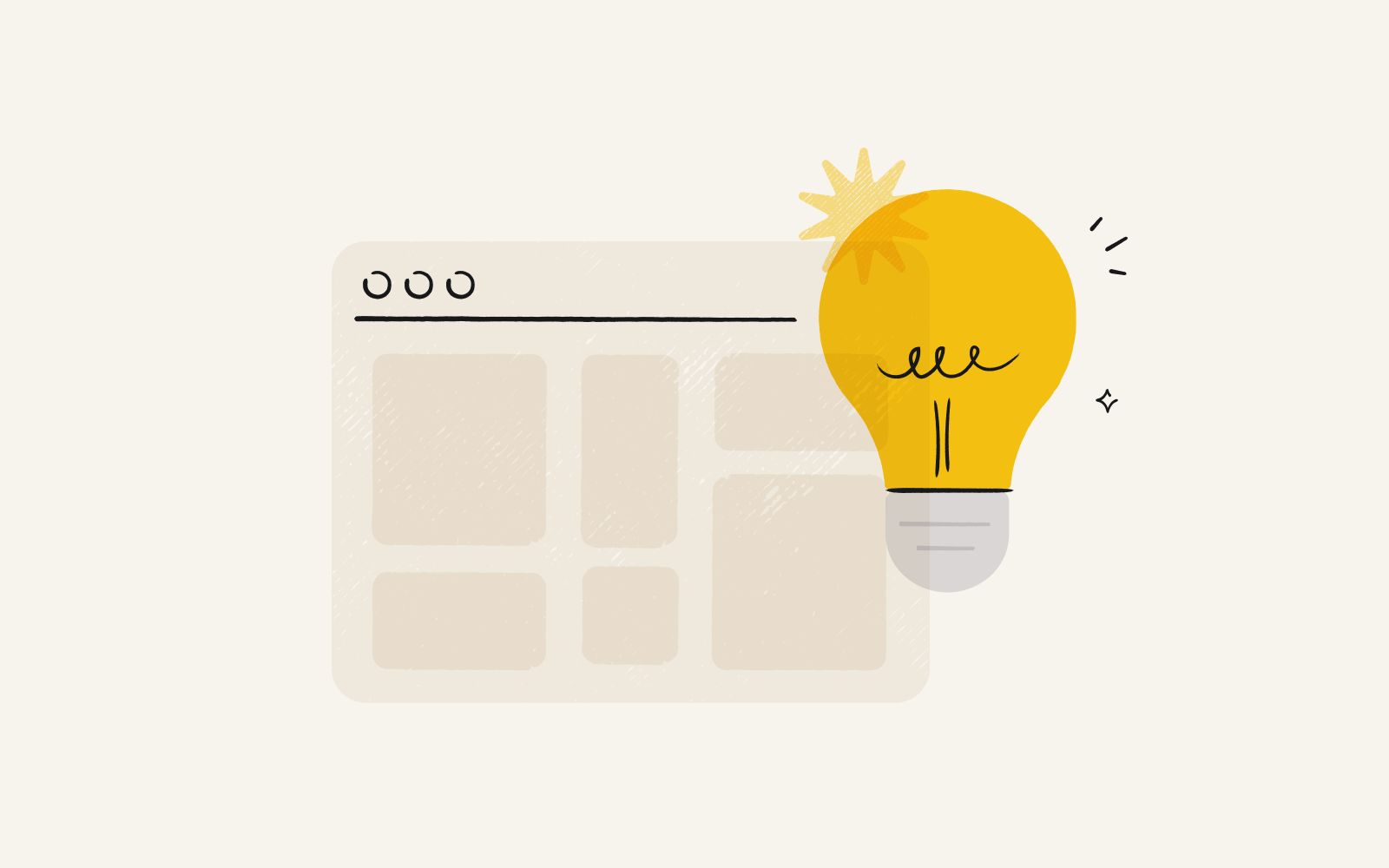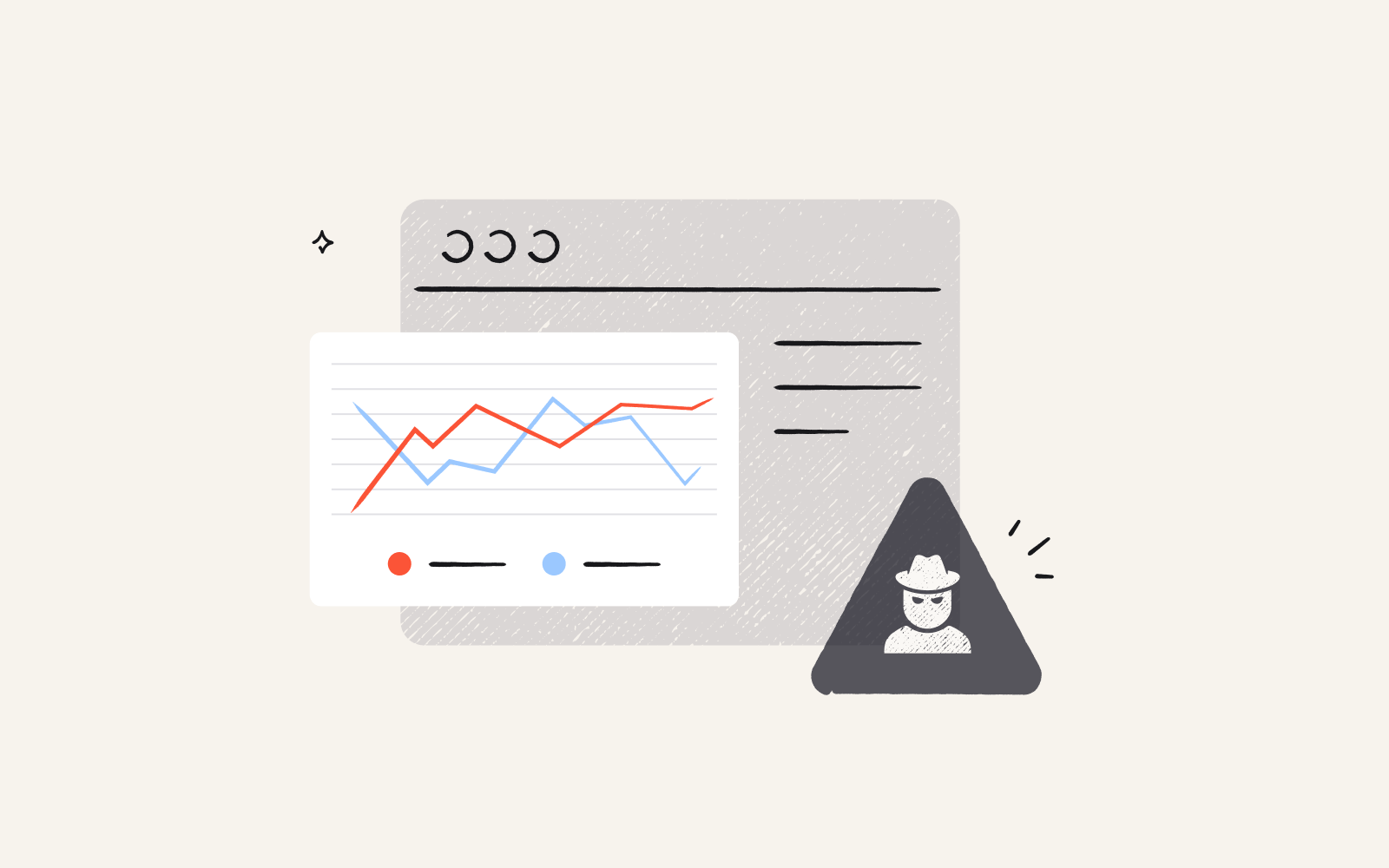What is a focus group?

In a focus group, an organization seeks out a small group of people that represents its target audience. A moderator asks the group different questions as they interact with a pre-determined topic. Usually an idea, prototype, or product.
The core goal? To collect key information about how your audience feels about the topic at hand.
Here’s why they’re important — and how you can run a successful one.
Why are focus groups important?
A focus group tests how your audience feels about a product or service, giving you qualitative data you can use to improve it.
Unlike quantitative data, qualitative data has nothing to do with numbers and statistics. Instead, it’s all about:
Opinions and attitudes: You'll gain an understanding of your participants' personal views, attitudes, and beliefs about the product or topic.
Emotional responses: You’ll see firsthand how participants react to the different features of your product or service.
Problems and suggestions: Would-be customers often pick out problems that product developers don’t think about—and they might even offer ideas for how to fix them.
Experiences: As your focus group tests the product features, they might discuss how the product would—or wouldn't—fit into their lived experiences.
Language and expression: Participants might use certain words or phrases to describe their experience, which you can use for marketing.
The qualitative data you receive from a focus group is gold. It’s the type of market research that can help you avoid huge snafus, like putting out a product people don’t even want. Or one that doesn’t work like your consumers expect.
And the beautiful thing about focus groups is that any industry can benefit from them.
Educational institutions. Medical facilities. Government agencies. Nonprofit organizations. Businesses and marketers. Music and entertainment venues. The list goes on and on.
As one Drexel University research brief put it, “Focus groups are a fast and effective way to elicit information and perspectives from a variety of key informants simultaneously.”
When should you run a focus group?
When you need feedback that reveals your target market’s emotions, thoughts, or feelings about something, a focus group can deliver.
Here are four situations where you could benefit from running a focus group:
New idea generation: Want people in your target audience to help you come up with ideas for the next great product? In a focus group, participants can interact with your current product line and point out potential new products or services they’d find useful.
Prototype testing: Have a working prototype of your next big thing? Run a focus group to tease out its limitations before you launch full production. Participants can play around with the prototype, talk to each other about it, and give unfiltered feedback about their experience.
Marketing material production: Need help figuring out how to pitch your product to the intended target audience? Whether you have marketing materials prepared or want help getting started, a focus group can steer you in the right direction.
Product evaluations and updates: Is your product getting negative reviews and bad press? A focus group can save the day. You can conduct one anytime after launch to see what your target audience thinks and feels about the product. They can tell you where it needs tweaking or updating.
Focus groups are important, but sometimes you’ll need to do a different type of market research. If you need quantitative, numbers-based data from a large group of people, a survey might be a better choice.
If you need to discuss sensitive or personal topics with people in your target audience, a one-on-one interview might be a safer space.
And if you need to get objective feedback on specific tasks—like e-commerce checkout testing—a usability test may be more appropriate.
Types of focus groups
Maybe you’re a small business or organization. You don’t have a ton of resources but you need to run a focus group anyway. You’re wondering how you’ll be able to rope a small group of 6-12 people from your target audience into one place at the same time.
If this describes you, take heart. There’s more than one way to run a focus group.
Here’s an overview of the different types:
Traditional: A small group of people—usually 6-12—gathers in the same physical space. A moderator asks specific questions and guides the discussion to get helpful feedback from participants. Company leaders and stakeholders may be present, or they might not. The session is often recorded for them to study later. Traditional groups are ideal when you need respondents to interact with a physical product.
Online: Instead of gathering in the same physical space, your small audience gathers via videoconferencing or teleconferencing software. This type of focus group works well for getting feedback on ideas for products, programs, and marketing campaigns.
Two-way: This type of focus group involves two separate sessions. Participants in Session 1 are observed by the participants who will be part of Session 2. In their session, the Session 2 participants discuss Session 1’s observations and reactions to the product. Twisty, we know.
Dual moderator: Instead of having one moderator carry the whole focus group, a dual moderator setup spreads the responsibilities out. One person runs the focus group, managing the logistics of the session. The second person makes sure all the topics get covered.
Mini: If you need highly specific feedback, a miniature focus group of 4-6 people can help. Smaller groups can be easier to manage. Participants can also get more comfortable with each other and discuss topics more thoroughly than they might in a bigger crowd.
One final consideration is the type of audience you choose.
In a homogenous focus group, your participants share specific characteristics. Say a university wants to create a program to help female college seniors connect with job opportunities in the business sector.
The university puts together a focus group of female college seniors who are also business majors— a homogenous focus group. This group helps the university collect feedback on how to create a successful program for that specific demographic.
By contrast, a heterogeneous focus group involves people from different backgrounds. This type of group is useful for getting a wider range of perspectives on a product or program.
Let’s go back to the example of a university launching a program for female business majors. After running a homogenous focus group, the university might run a heterogeneous focus group. It could comprise females interested in business, like the first focus group, but those females could be:
Freshmen, sophomores, juniors, seniors, or five-year seniors
Graduates who went on to find successful jobs in the business world
Students in MBA (Master of Business Administration) programs
Members of underrepresented or marginalized communities
The university might not get as much highly specific, focused feedback, but it would gain a valuable range of perspectives.
Keep in mind that most focus groups are a combination of types. You could have an online, dual-moderator focus group with a homogenous audience. Or a traditional, two-way group that includes both a homogenous and a heterogeneous audience.
Only you can decide which types fit your needs the best.
How to run a focus group
Careful planning is your friend here.
It can help you avoid awkward and potentially expensive situations, like a conversation that veers off-topic and never gets back on course. Or a focus group that’s dominated by one or two individuals. Or questions that elicit shallow “yes” and “no” responses and not much more.
Here’s a guide to get you started.
1. Define your objectives
Goal: Clearly define what you aim to achieve with the focus group.
Begin by pinpointing the exact questions you want the focus group to answer.
Are you exploring user reactions to a new product? Understanding customer dissatisfaction after a floppy launch? Gathering ideas to improve a program or service? The objectives should be specific, measurable, achievable, relevant, and time-bound (SMART).
Take a look at the types of focus groups and decide which type(s) you want to implement. Will you run a mini focus group? A dual-moderator one? Will it be online or in person? Do you need a homogenous or heterogeneous audience or one of each?
This first step of planning will guide everything that comes after, so take your time with it.
2. Decide on an incentive
Goal: Choose an incentive that will attract and retain the right type of participant.
When you conduct a focus group, you’re asking people for their time and mental labor. It’s only fair to offer a reasonable incentive in return.
In October of 2023, we partnered with The Decision Lab to ask 300 US residents 10 questions each about what types of incentives they actually want.
Here’s a snapshot of what we learned:
Base pay for participation should be $1.76 per minute.
Most participants want cash, prepaid Visa gift cards, or gift cards to stores of their choosing—in that order.
Digitally transferred incentives are better than mailed checks or gift cards.
In other words, no one wants free swag instead of a real incentive.
The good news? Focus groups are small by design, which can make it financially feasible for your organization to offer a good incentive.
3. Choose your participants
Goal: Recruit participants who represent your target audience and match your focus group type.
You might need to run ads, reach out to social media groups, or connect with a recruiting agency. Develop a screening questionnaire to collect participants with the right mix of demographics, behaviors, and other relevant characteristics.
Communicate clearly and professionally with potential participants. Provide all necessary information about the focus group. This includes being upfront about its purpose, the time commitment required, the location (or link, if it’s virtual), confidentiality measures, and the incentive offered.
Also, the unfortunate reality is that it’s common for some participants to not show up. Consider over-recruiting by 10-20% or having a standby list of participants who can fill in if there are last-minute cancellations.
We wrote a step-by-step guide for nailing the participant recruitment process. Check it out for more information.
4. Pick a moderator
Goal: Choose a moderator with the skill to navigate the flow of the discussion and keep it on track.
Choosing the right moderator (or moderators) for your focus group is one of the biggest ways to make it a success. You want someone who's great at sparking interesting conversations but knows how to make everyone feel included, too.
�A good moderator is a good listener. They're also good at asking questions without showing bias one way or another. At the same time, they offer a mix of curiosity and neutrality about the topic. They help make sure everyone gets a fair chance to participate, from the most outgoing to the shyest in the room.
You might have an excellent moderator on your team. Or, like many organizations, you might need to hire a pro to get it done right.
Do your due diligence when it comes to working with an external moderator. Read testimonials and reviews.
Take the time to interview the moderator to see if they’re a fit. Ask them how they would handle different situations, like a person who dominates the conversation. Or a focus group that can’t seem to get a discussion off the ground.
5. Prepare a discussion guide
Goal: Develop a roadmap for your focus group, complete with questions and topics for participants to dig into.
Here's what to include in your guide:
Introduction: Outline the goal of the focus group and give participants context for why you're doing it. Explain how the session will go. Include details about confidentiality, recording procedures, and the importance of everyone's input.
Icebreakers: Jot down some easy, open-ended questions that can help people feel more comfortable with each other. Try to make them relevant to your topic, product, or program, but don’t worry if they’re more general. The goal is to get people talking.
Core questions: List the main areas of interest or themes that the focus group needs to cover. For each topic, include several open-ended questions designed to elicit detailed responses and stimulate discussion. Prepare follow-up questions or prompts to probe deeper into certain areas as the opportunity arises.
Closing questions: Allow time and space for participants to offer up any last-minute comments or feedback. Thank participants for their time and let them know the next steps—what you’ll do with the data, for instance, and when they can expect their incentive.
6. Map out the logistics
Goal: Set up a safe and reliable space for your focus group and make sure everything works.
This is where you plan out the when, where, and how of your focus group.
When will you run it? Will it be online? If so, what platform will you use? Can you record the session with ease? Make sure you test the platform and any links before the day of the focus group.
If it’s in person, choose the location with care. Is it easy to find? What’s the parking situation? What refreshments can you bring to keep your respondents comfortable? What recording equipment will you need to capture the feedback for future analysis?
Consider doing a run-through to test out all your logistics before the big day. This helps you avoid time-consuming hiccups when it’s go time.
7. Run the focus group
Goal: Get ready to learn about your product and target audience. Be open to the thoughts, opinions, and emotions your participants express.
Most stakeholders take a step back during this part. It’s too easy to let your own emotions about your product get in the way of the focus group. You might feel a strong urge to pipe up defensively if someone doesn’t like a product feature or characteristic.
That’s why you have a moderator.
If you believe you can observe the focus group without jumping into the fray—and without intimidating the participants—go ahead and observe. If not, consider waiting until the group is over and the recording is ready for you to view.
8. Analyze the results
Goal: Study the results of your focus group to identify key insights that will guide your journey forward.
Once your focus group wraps up, it’s time for the real fun. You now get to explore the fruits of all the work you did to set up the focus group.
Start by watching and transcribing the recordings. Standalone transcription software can take an in-person recording and turn it into a written document. The goal of this step is to turn the focus group’s discussions into a written format that you can easily analyze.
Next, start reading the transcripts. Look for recurring themes and patterns. What points did the group agree on? What did they disagree about? Did one person seem to really love—or dislike—a feature while the rest of the group felt the opposite?
Put together a report that tells the story of your focus group's key findings. Include direct quotes from participants that support these points.
Finally, put these insights to work. Use them to guide your next steps. With the results of a well-run focus group in your pocket, you can confidently move forward with your project—or go back to the drawing board.
Key takeaways
Here’s a recap of our key points about focus groups:
Why focus groups matter: They dive deep into how your target audience feels about your product, revealing insights into opinions, emotional reactions, and practical feedback. This qualitative data can steer product development and marketing strategies in the right direction.
When to use focus groups: These sessions are ideal in several different situations. They can help you come up with new ideas, test prototypes, refine market materials, and evaluate products post-launch.
How to run a focus group: Start with a clear goal and pick the right participants. Offer enticing incentives, choose a skilled moderator, and prepare a thoughtful discussion guide. Nail down logistics for a smooth session, observe the group, and then dive into the analysis to unearth actionable insights.
Tremendous makes it easy to send your focus group participants rewards they'll love. We offer 2,000+ redemption options in over 200 countries. Sign up now and send your first reward in minutes or talk to our sales team.


